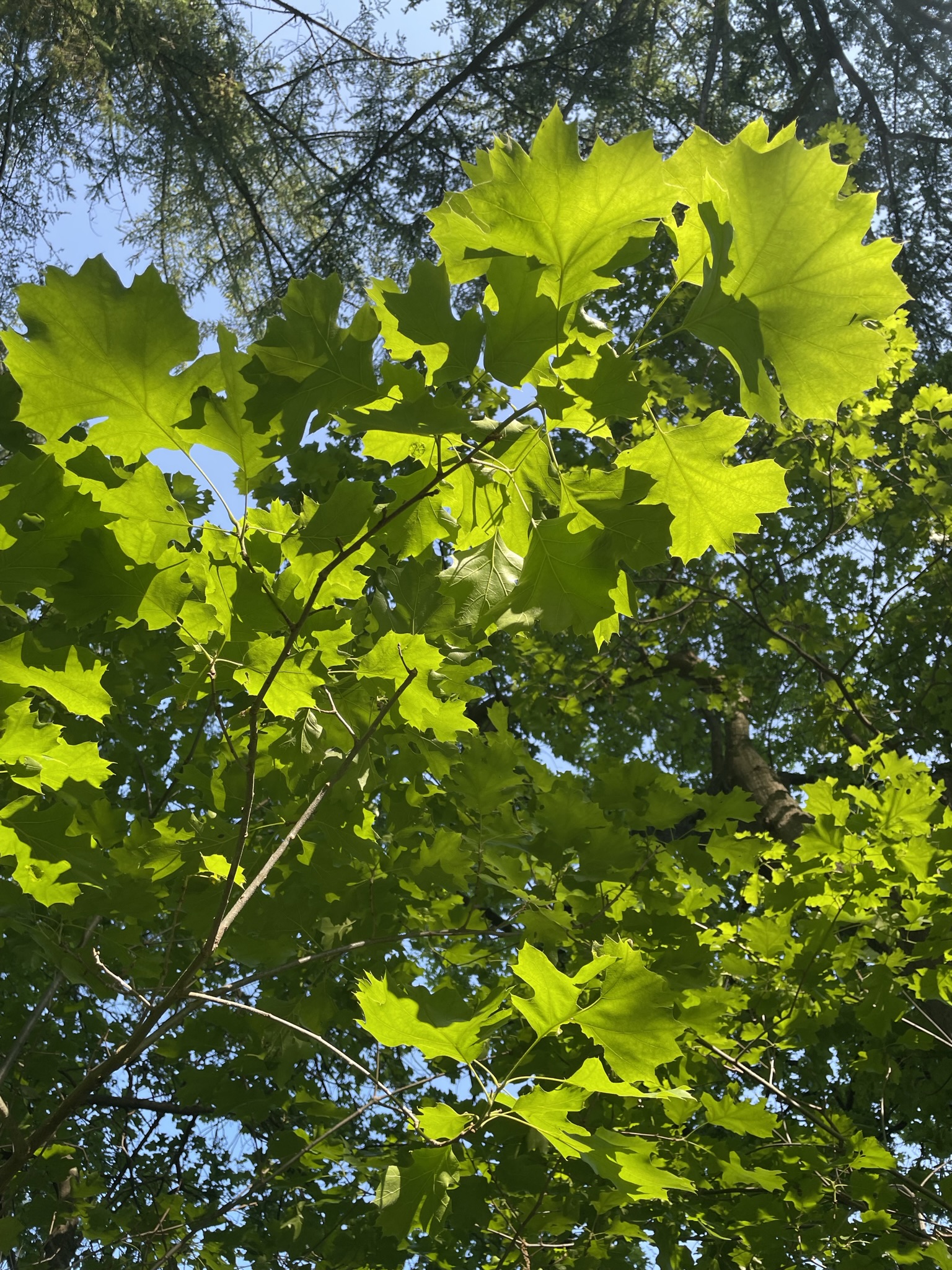
STATES – PALMER, E.J. 26434
One of the most threatened trees in the United States, the maple-leaf oak has a 100-year history with the Arnold Arboretum.
The Arboretum is home to over 1,000 oaks. Of those, roughly 20 are maple-leaf oaks (Quercus acerifolia). Half of these are scattered across Bussey Hill and half are clustered in the northeast corner of Peters Hill not far from Poplar Gate. But one stands alone, at the southern end of Peters Hill, just inside Mendum Street Gate.
This specimen, 21804*B, is the oldest maple-leaf oak in cultivation, an accession from the 1924 collecting trip where Arboretum plant collector Ernest Jesse Palmer first described and collected the plant in the Ozark Mountains. Palmer first hazarded that the plant was a variety of Shumard oak (Quercus shumardii var. acerifolia). In 1990, researchers determined that the tree was actually its own species based on differences between the leaves and acorns of Quercus shumardii and what we now call Quercus acerifolia.
Along with retaining its identity as an oak, the maple-leaf oak also retained the “acerifolia” part of its name, which describes the leaves as “maple (genus Acer)-like.” Scroll through images of its saw-toothed, spine-tipped leaves, and the name becomes clear. In the fall, these leaves turn a deep red.
Today, the maple-leaf oak is one of the rarest oaks in North America. There are only a handful of populations of the tree in the wild, all in rocky, high-elevation sites across the Ouachita Mountains of western Arkansas.
Oak conservation is difficult because when their seeds (also known as acorns) are dried, they are no longer viable. This means that unlike many other species, oak seeds can’t survive in seedbanks Therefore, all conservation outside of the wild needs to occur with living trees.
In October 2014, researchers from several institutions—the Morris Arboretum, Polly Hill Arboretum, Arkansas Natural Heritage Commission, and Arnold Arboretum—went on a collecting trip to the Ozarks. Over the course of a week, they collected material from 34 different species, including Ozark witchhazel (Hamamelis vernalis), American hazel (Corylus americana), and a chinkapin (Castanea ozarkensis).
On the penultimate day of the trip, the group hiked around Mount Magazine State Park—the area where Palmer had first collected and documented the maple-leaf oak 90 years before. They encountered several stands of trees, but none of them bore any acorns. On their way back down the mountain, they found one additional group of trees. One tree had three acorns—one for each arboretum.
Thanks to our greenhouse staff, this single acorn accession germinated and thrived. Maple-leaf oak 351-2014*A stands along Valley Road, just half a mile north of its elder relative, collected in the same area by Arnold Arboretum staff nearly a century apart.
Arkansas
Viewing this plant in-person? Look for these defining characteristics:
1

2
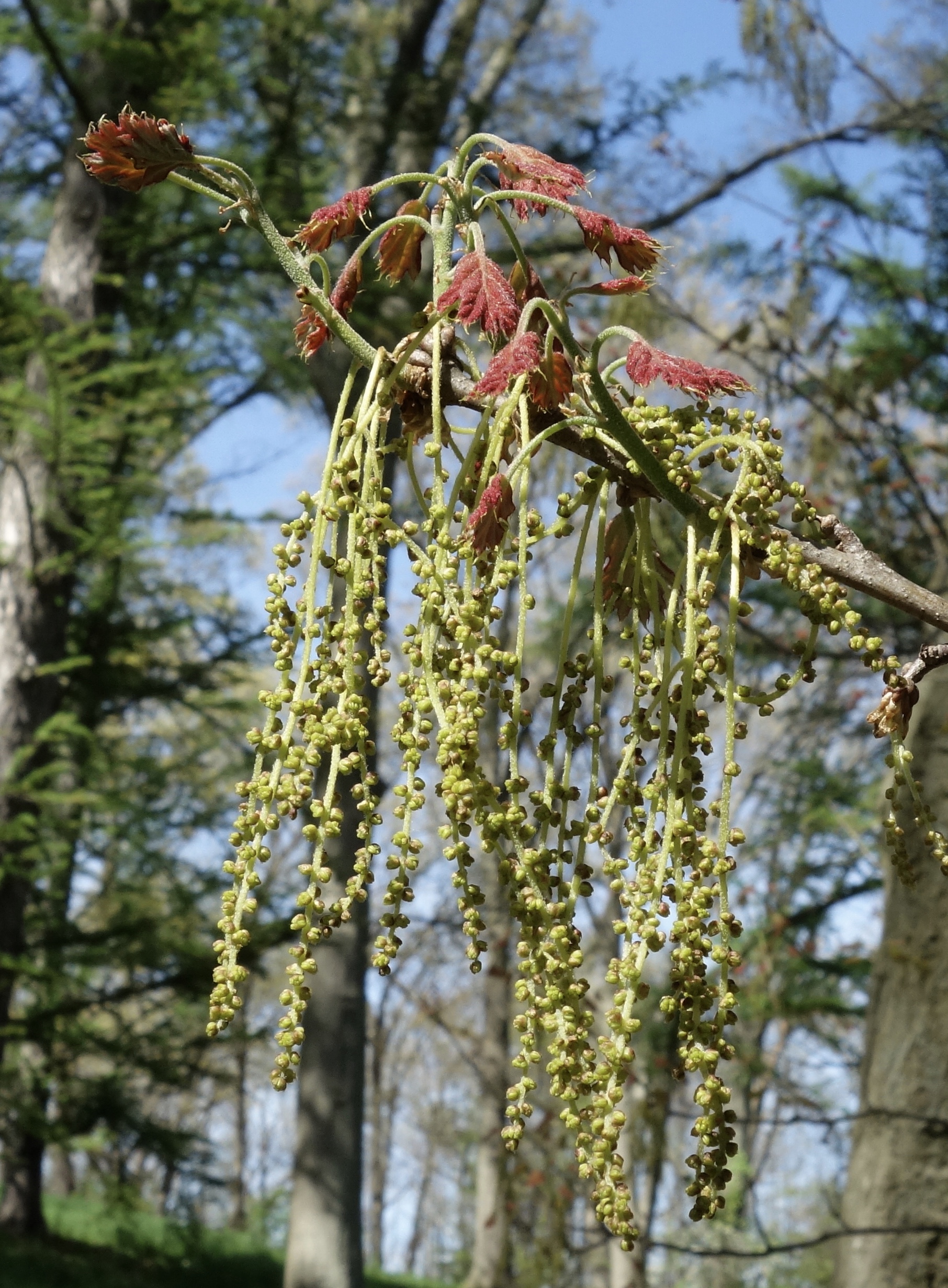
3
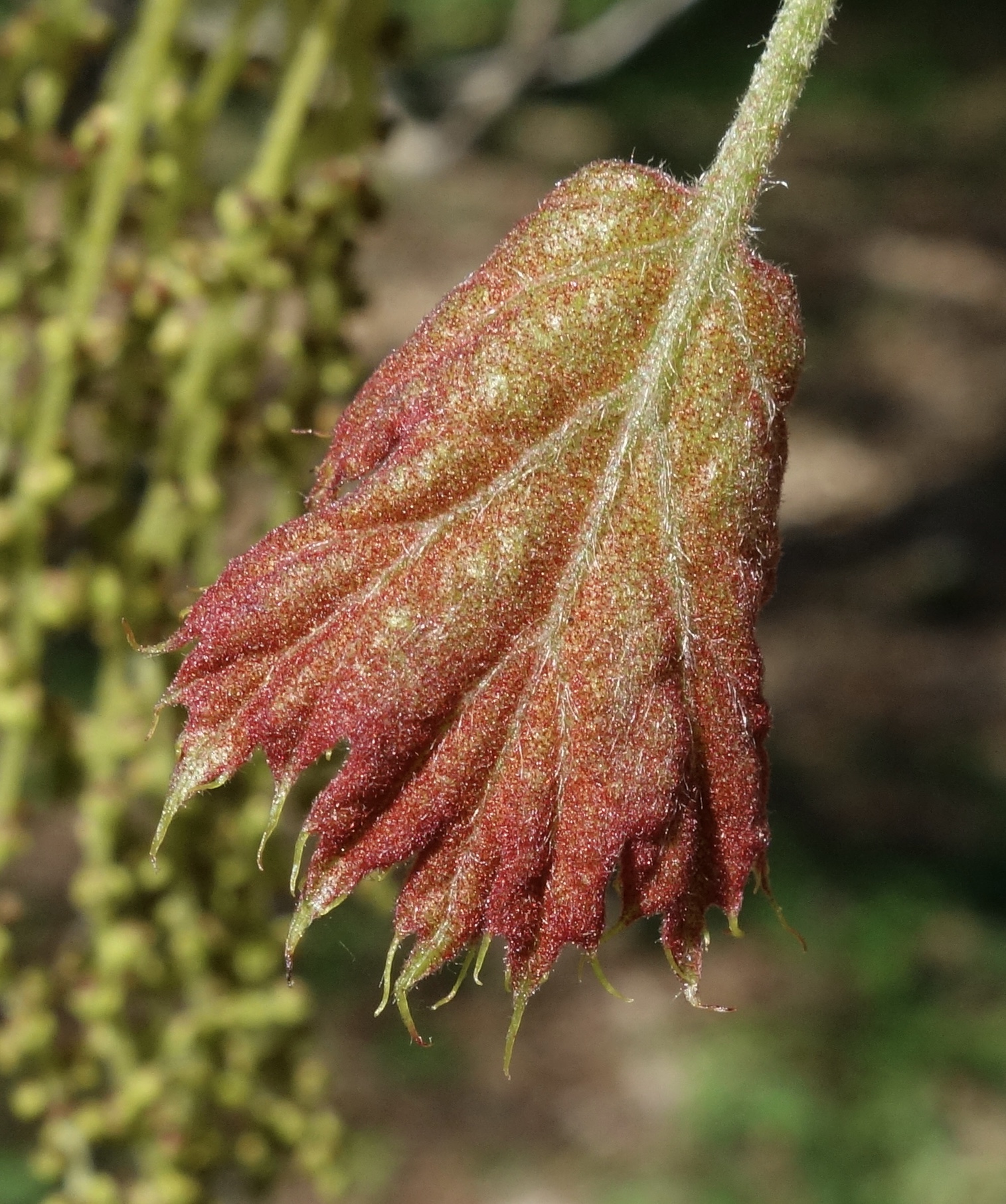
About Our Collection
Fun Facts
Stats
- Living Specimens
- Specimens Dead or Removed
- First Addition
- Most Recent Addition
- Tallest Specimen
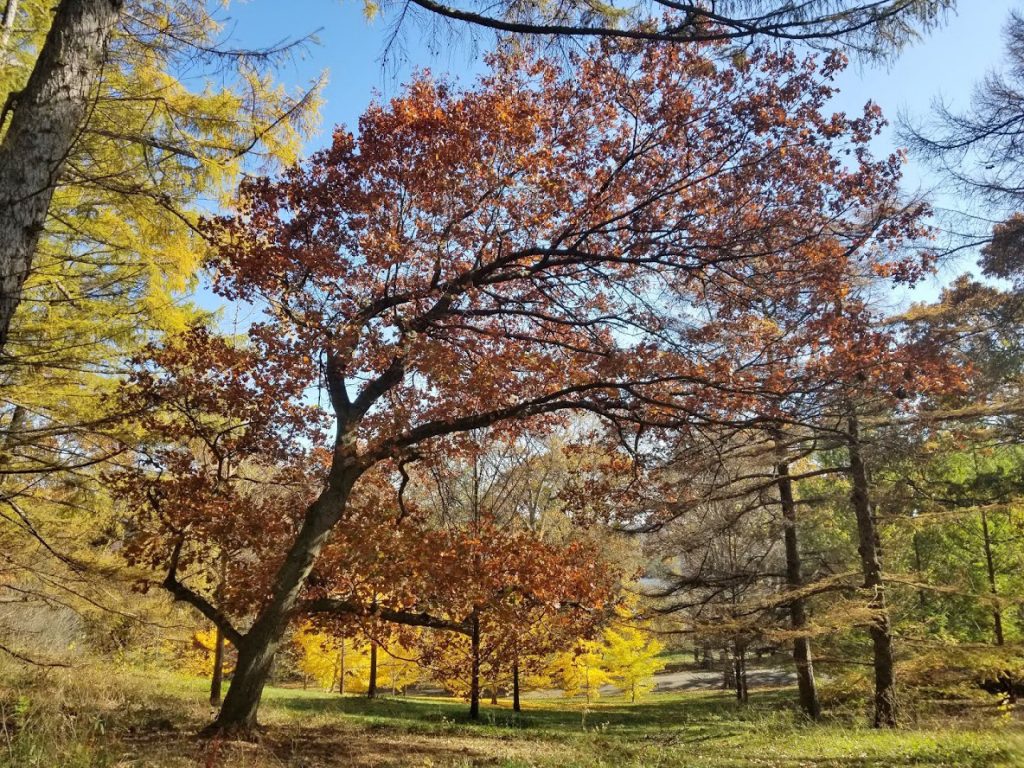
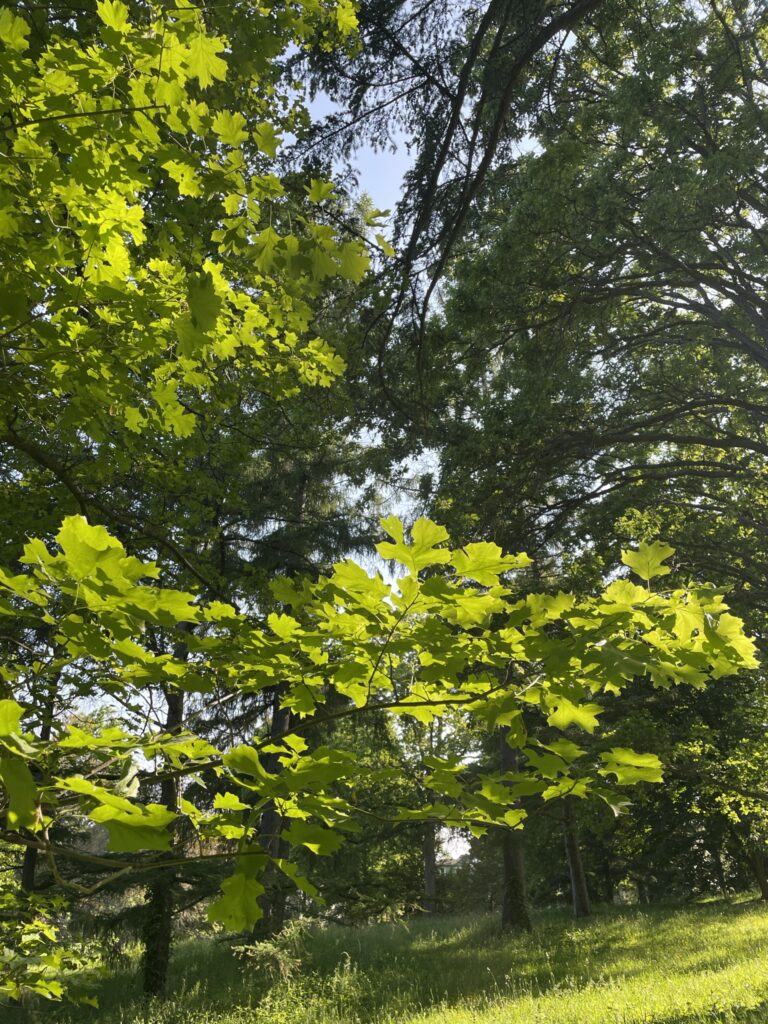
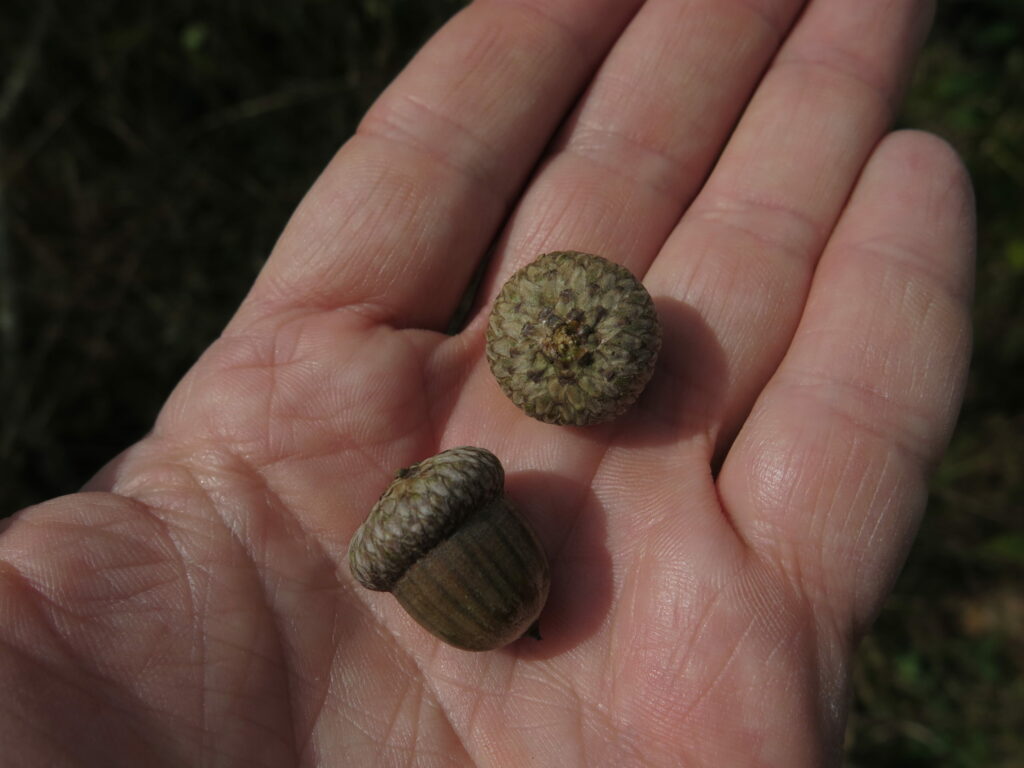
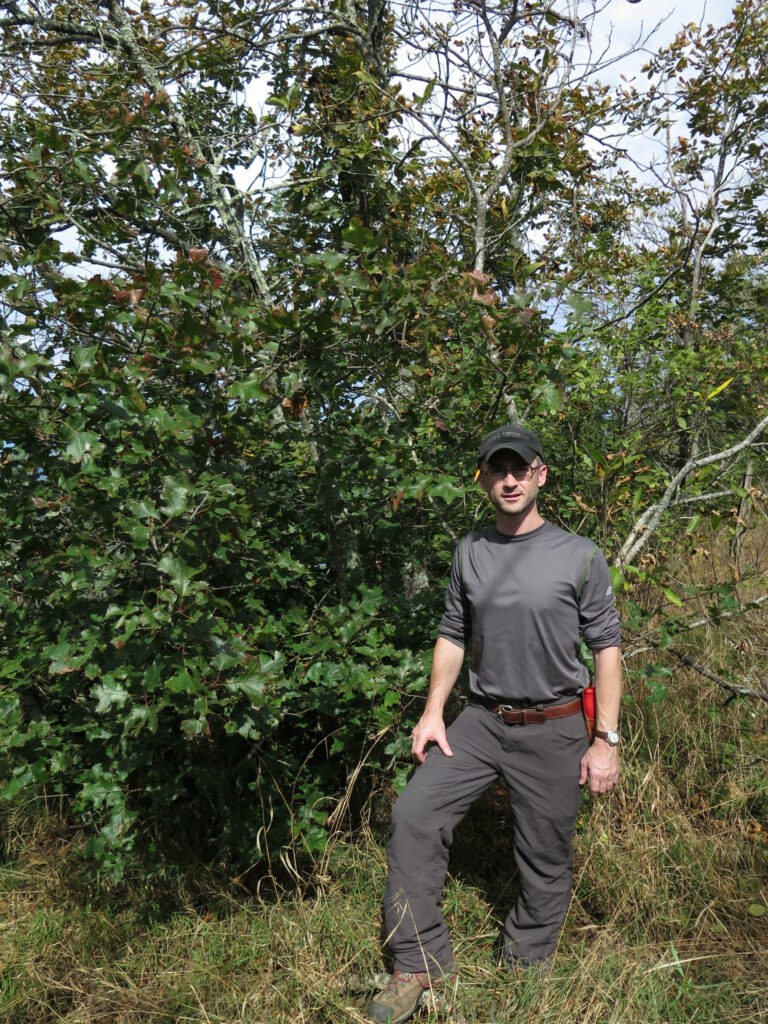
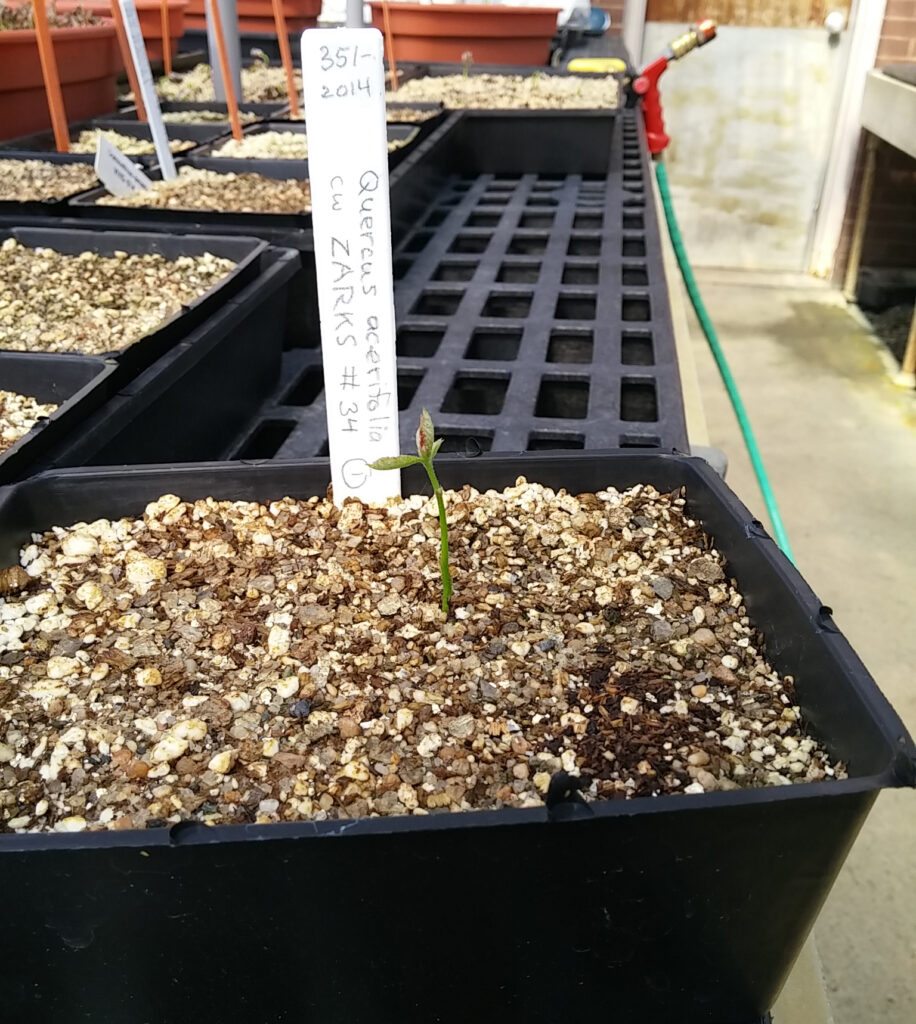
31 Living Specimens
| Plant ID | Accession Date | Received As | Origin | Source |
|---|---|---|---|---|